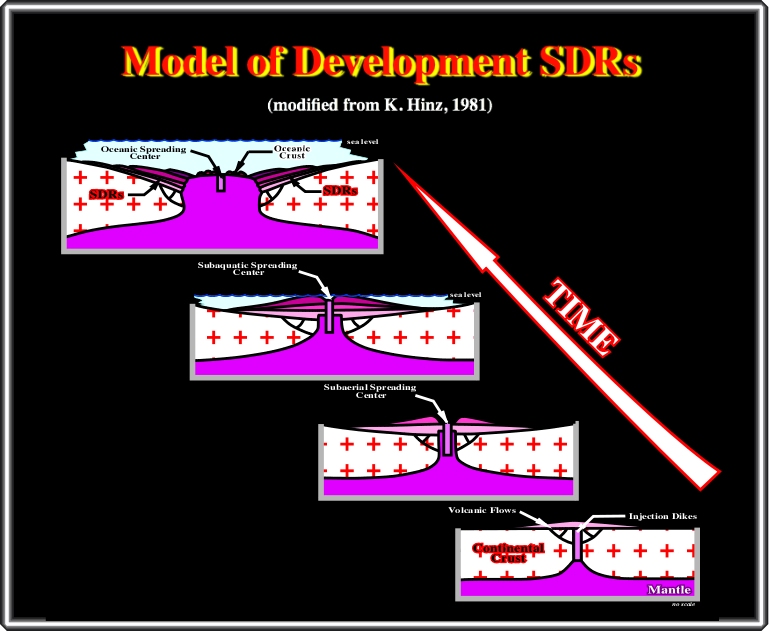

III- Opening Hypothesis with SDRs
In the 80’s, several geologists explained the SDRs considering that crustal extension and thinning occurred during the processes of crustal rupture and it was followed by injection of dikes and basaltic flows developed in subaerial environments either creating structurally raised areas, or filling local lows forming thick deposits of volcanic rocks, volcanic-clastics and siliclastic sediments (Hintz, K., 1981).

This model explains the origin, age and evolution of the SDRs. It suggests a break-up induced by intense injection of mantle dikes rather than a thinning of the lithosphere (conventional models). On the other hand, it is quite clear that K. Hinz clearly understood that subaerial volcanism postdated the break-up of the lithosphere and so the SDRs were anterior to the evaporite intervals of present in the Atlantic margins. By the same token, he realized that the loading of successive lava flows was the more important cause of their seaward tilting. However, it does say anything about the evolution of the margins, how salt basins were developed and why the evaporite deposited in the Atlantic margins are so rich in potash and so poor in MgS04. The hypothesis suggested by Total's geologists (Fonck et al., 2000) in collaboration with the Bureau of Economic Geology (Jackson et al., 2000) tries to explain such a features.
to continue press
next
Send E-mail to carloscramez@gmail.com or to carlos.cramez@bluewin.ch with questions or comments about this conference. Copyright © 2006 CCramez Last modification: August, 2014